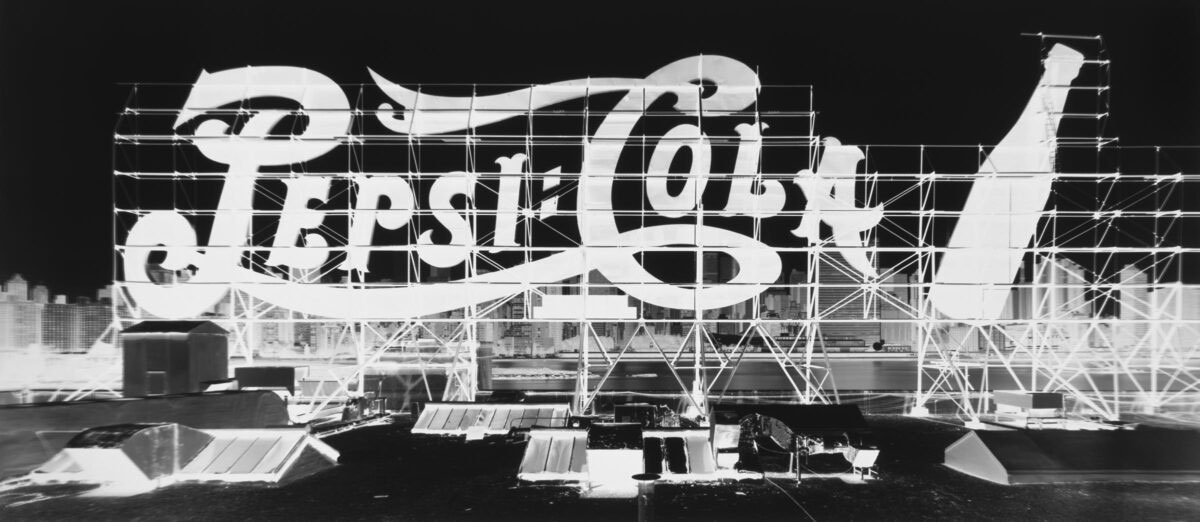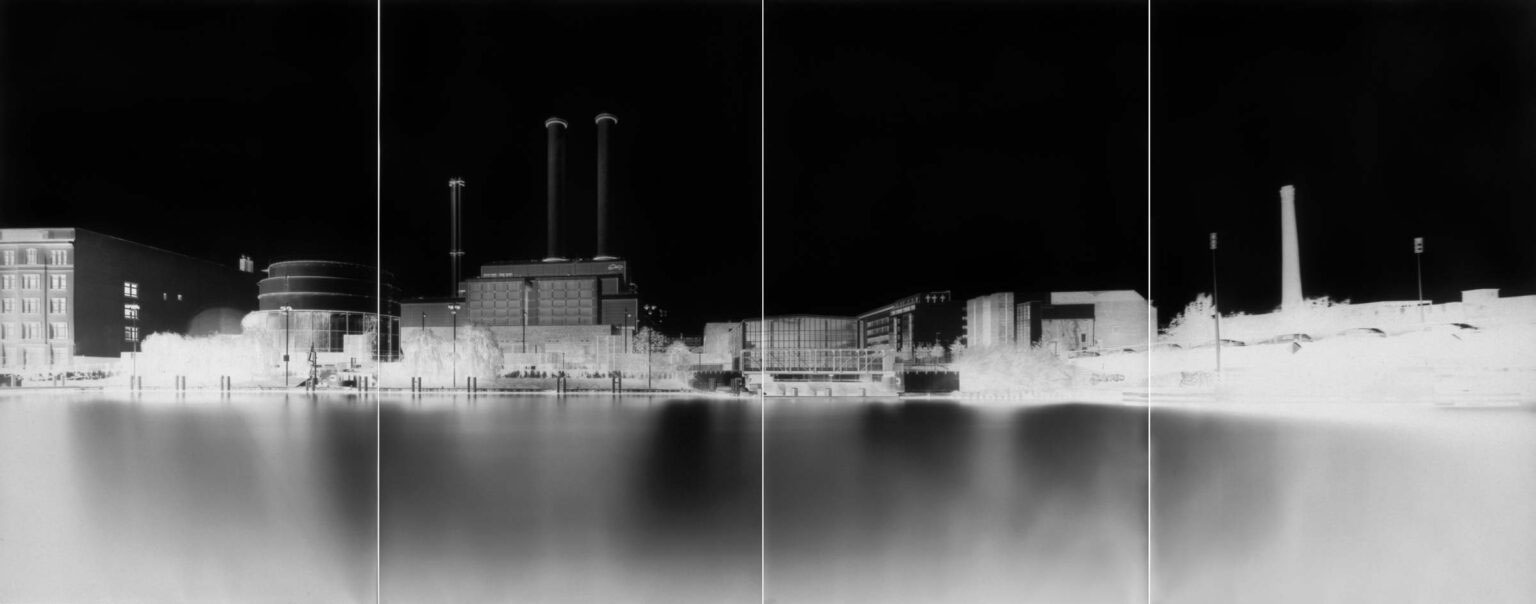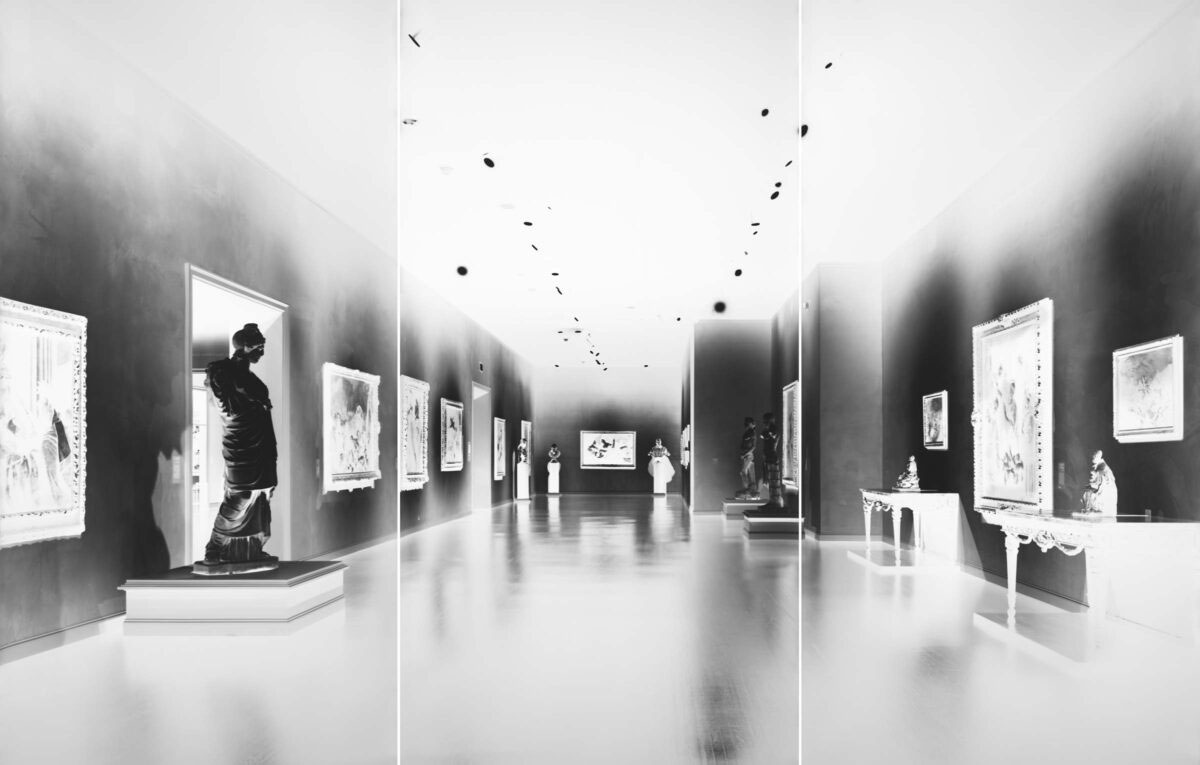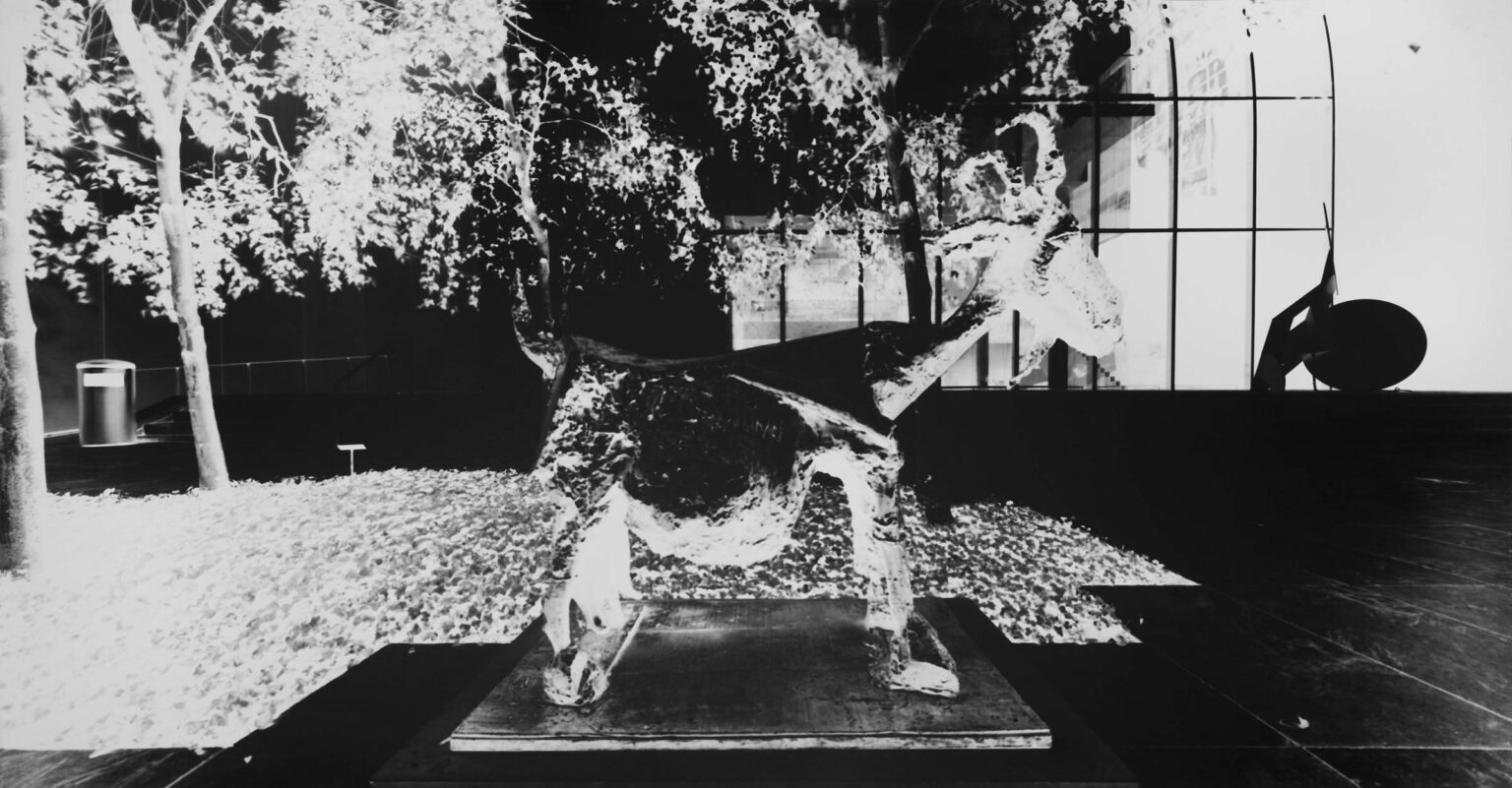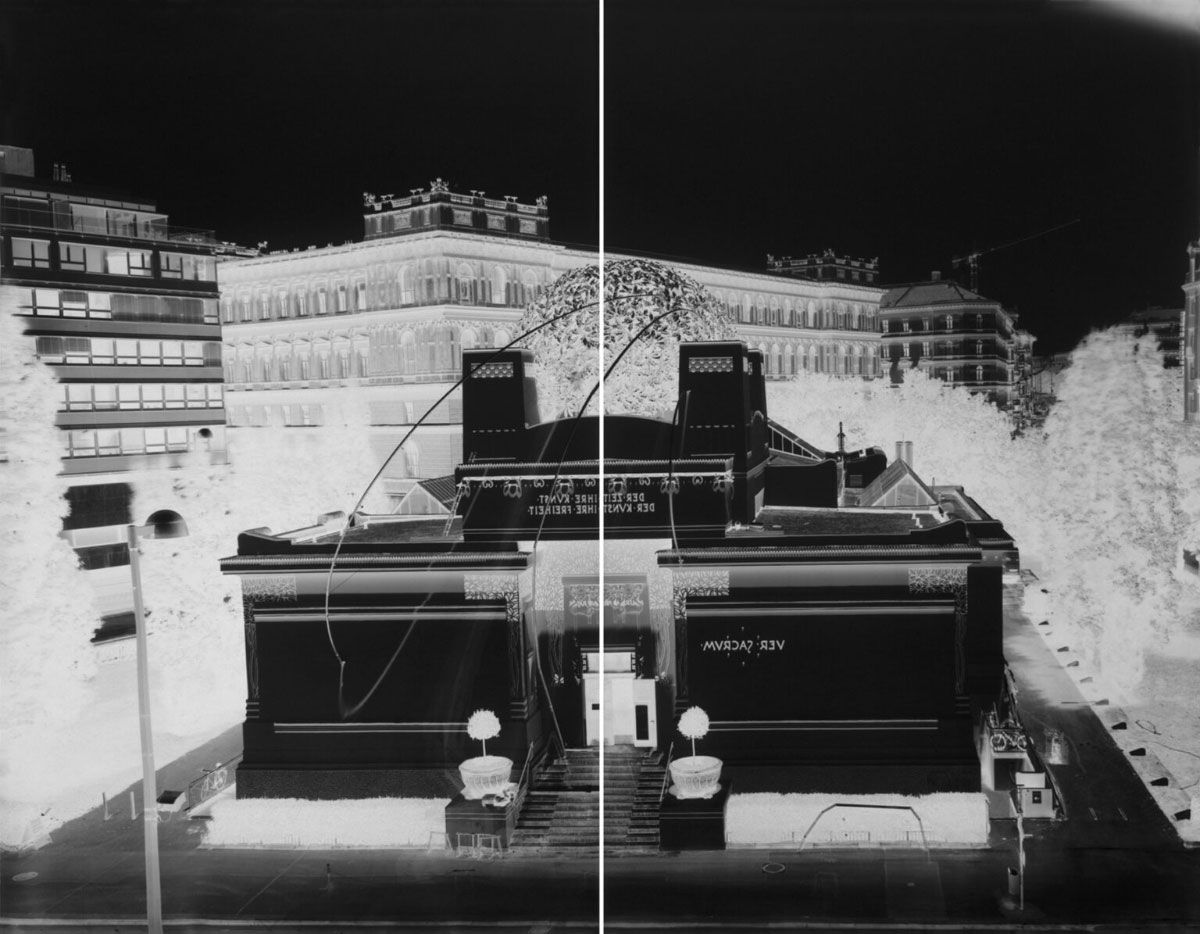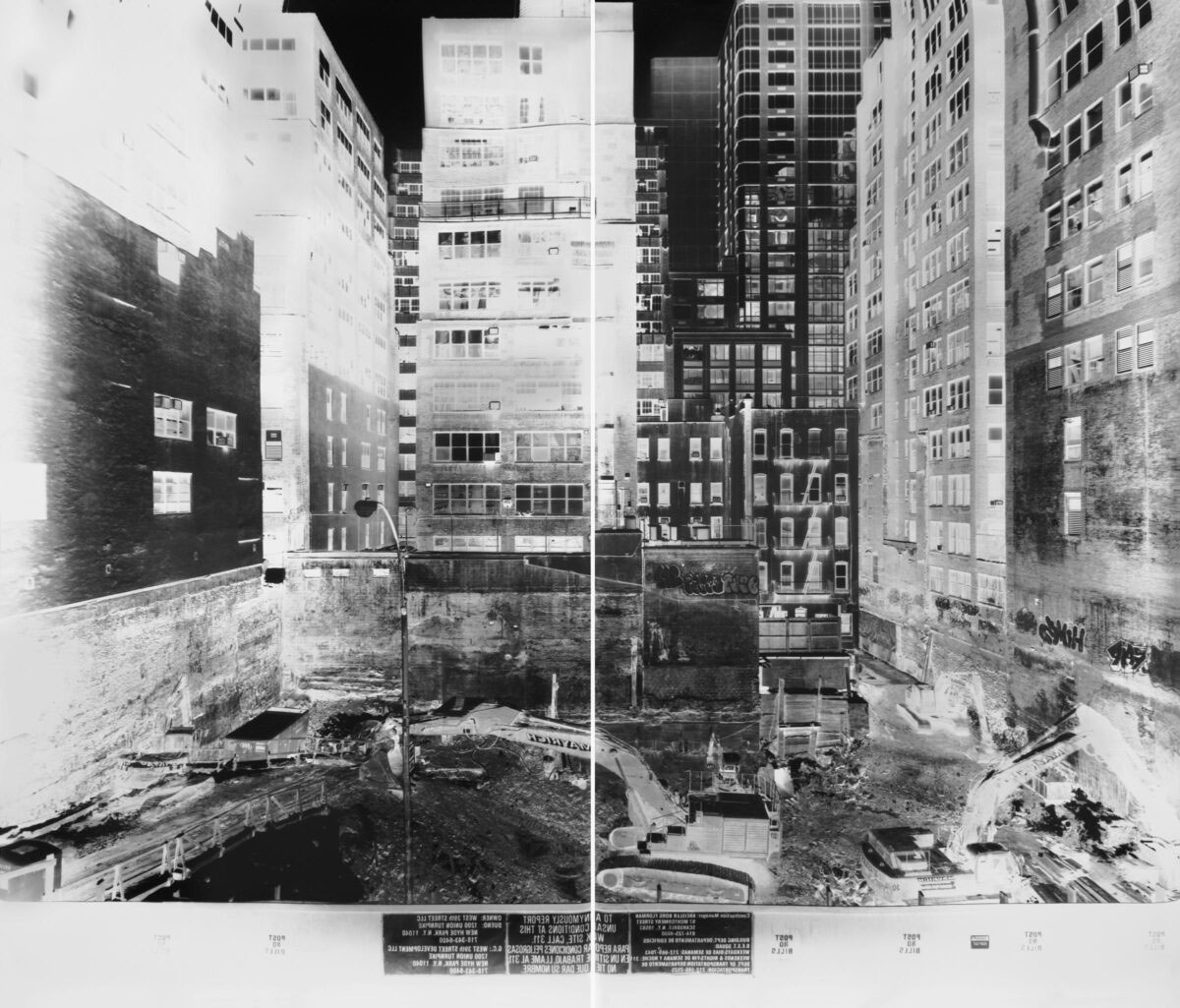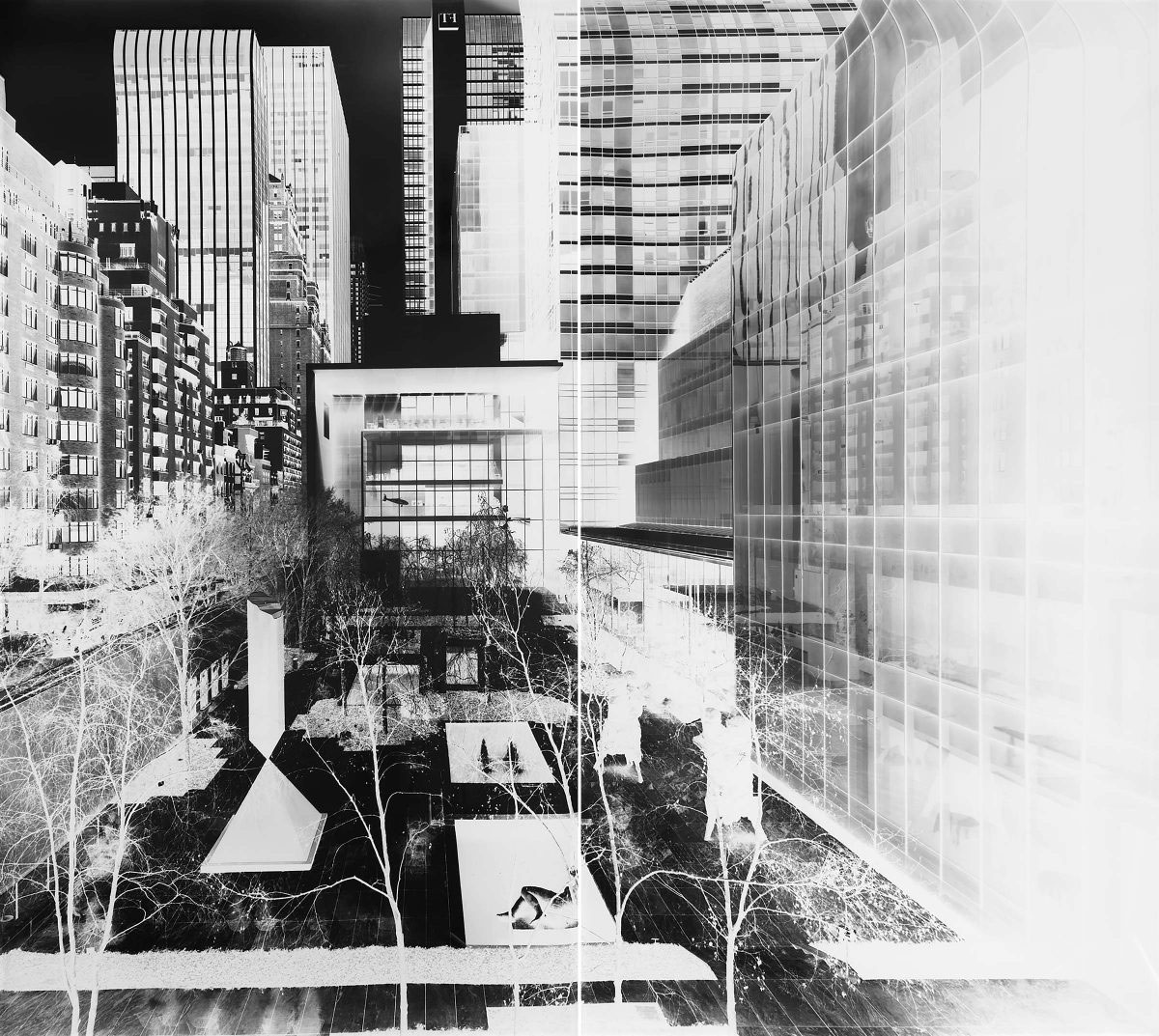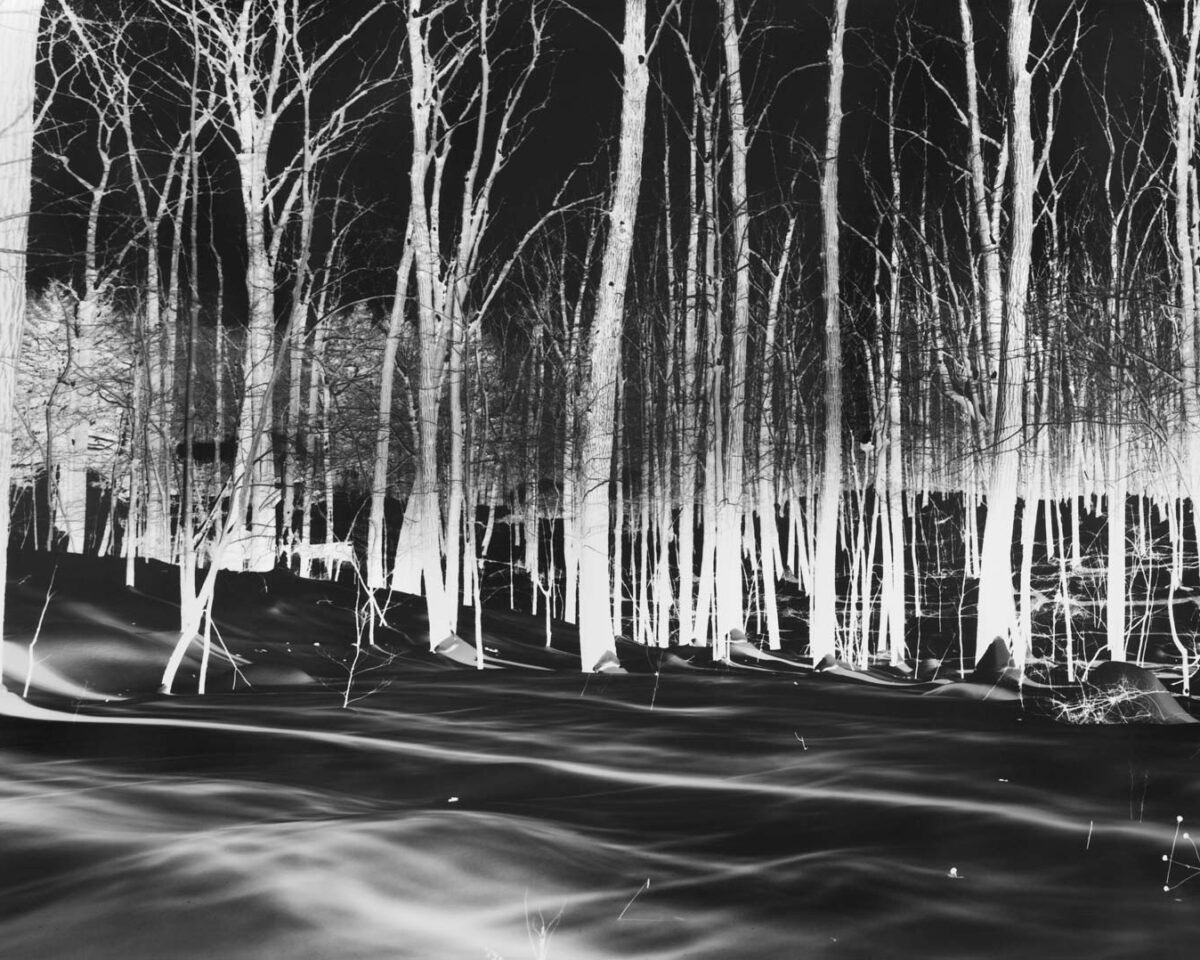PHOTO: Vera Lutter
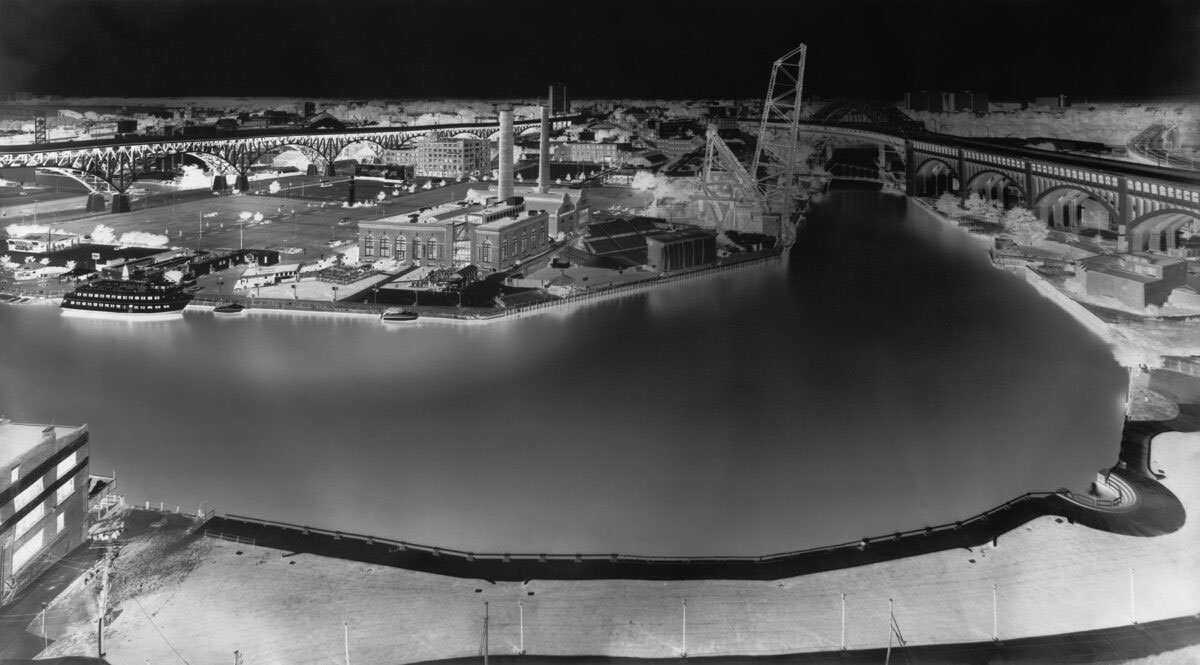 Inspired by New York’s light, architecture, and perpetual state of flux, Vera Lutter turned to photography in the early 1990s as a means to record the continuously changing cityscape. To capture an immediate and direct imprint of her surroundings, she transformed her apartment into a large pinhole camera, employing the space that contained her personal experience as the apparatus that would document it.
Inspired by New York’s light, architecture, and perpetual state of flux, Vera Lutter turned to photography in the early 1990s as a means to record the continuously changing cityscape. To capture an immediate and direct imprint of her surroundings, she transformed her apartment into a large pinhole camera, employing the space that contained her personal experience as the apparatus that would document it.
By Dimitris Lempesis
Photo: Xippas Gallery Archive
Vera Lutter in her solo exhibition in Geneva presents her single edition photographs created with a camera obscura, with images of architecture, urban sites, landscapes and works of art. If the subjects are immediately recognisable, the inversion of the tones and the passage of time thus captured induce a sensation of mirage that plunges the viewer into deep contemplation. Vera Lutter uses one of the oldest optical technologies still in use, that of the camera obscura. Before the invention of photography, it was known that if light traveled through a tiny hole into a darkened room, an image of the external world (off which the light rays had reflected) would re-form upside down on a wall opposite the tiny opening. By building room-sized cameras and placing unexposed photo paper across from a pinhole opening, Lutter has adopted the camera obscura as her singular working method, resulting in photographs with an ethereal, otherworldly beauty. When the image is developed – after an exposure process of several hours, days or weeks – it is a black and white negative assuming precise yet mirage-like perspectives. She draws inspiration from architecture and her works explore urban landscapes, industrial sites, mythical landscapes, and the views from her artist studio. These are a selection of the many places where she reframes images to reveal different layers of spatial perception. Her large-scale photographs often require several hours or days of light exposure. She chooses to work with room-sized cameras allowing the size of the resulting image to reflect the architecture in which it was made. The prolonged exposure allows her to record images that give evidence to time passed. The resulting ephemera and movement dissolve time into the image, sometimes enabling ghostly forms to surface. These photographs don’t simply translate the real; they also reveal an intermediate world, a space of corresponding apparitions. The images radiate a fluid and otherworldly feeling that allows the gaze to drift and linger on certain details captured with startling precision.
Vera Lutter was born in Kaiserslautern, Germany. Lutter received her undergraduate degree from the Akademie der Bildenden Künste in Munich in 1991, where she trained as a sculptor. In 1993, she moved to New York City, where she was inspired by the city itself to take up photography. She began studying in the Photography and Related Media program at the School of Visual Arts in New York, and was awarded her MFA in 1995. In an early phase of her work, Lutter began experimenting with a camera obscura, which was a direct antecedent to the modern day photographic camera that was found in Europe as early as the 13th century. The early versions of the camera obscura were essentially an enclosed, room-sized space that had an aperture in one wall. Lutter decided to revisit history by transforming an entire room of her New York apartment into a camera obscura. As a result, she was able to capture an unfiltered image of the city on a wall-sized piece of photographic paper. Since that time, Lutter has transformed a shipping container into a camera obscura that can be transported around the world and used to create large images of architecture, shipyards, airports, and abandoned factories. She has also taken photographs of the pyramids of Egypt. Due to the fact that she exposes her images for long periods of time, Lutter is able to capture traces of movement that add a temporal dimension and an ethereal feeling to her work.
Photo: Vera Lutter, The Flats, Cleveland, III: July 3, 1997, 55 x 99 inches (140 x 252 cm), © Vera Lutter, Courtesy the artist and Xippas Gallery
Info: Xippas Gallery, Rue des Sablons 6 & Rue du Vieux-Billard 7, Geneva, Switzerland, Duration: 7/10-26/11/2022, Days & Hours: Tue-Fri 10:00-13:00 & 14:00-18:30, Sat 12:00-17:00, www.xippas.com/
